If you’ve planted native plants or you’re growing a dedicated pollinator garden, you’re already well on your way to helping pollinators and other wildlife. But you can make your impact even greater by turning your garden into a certified wildlife habitat. And the good news is, it’s even easier than you might expect!
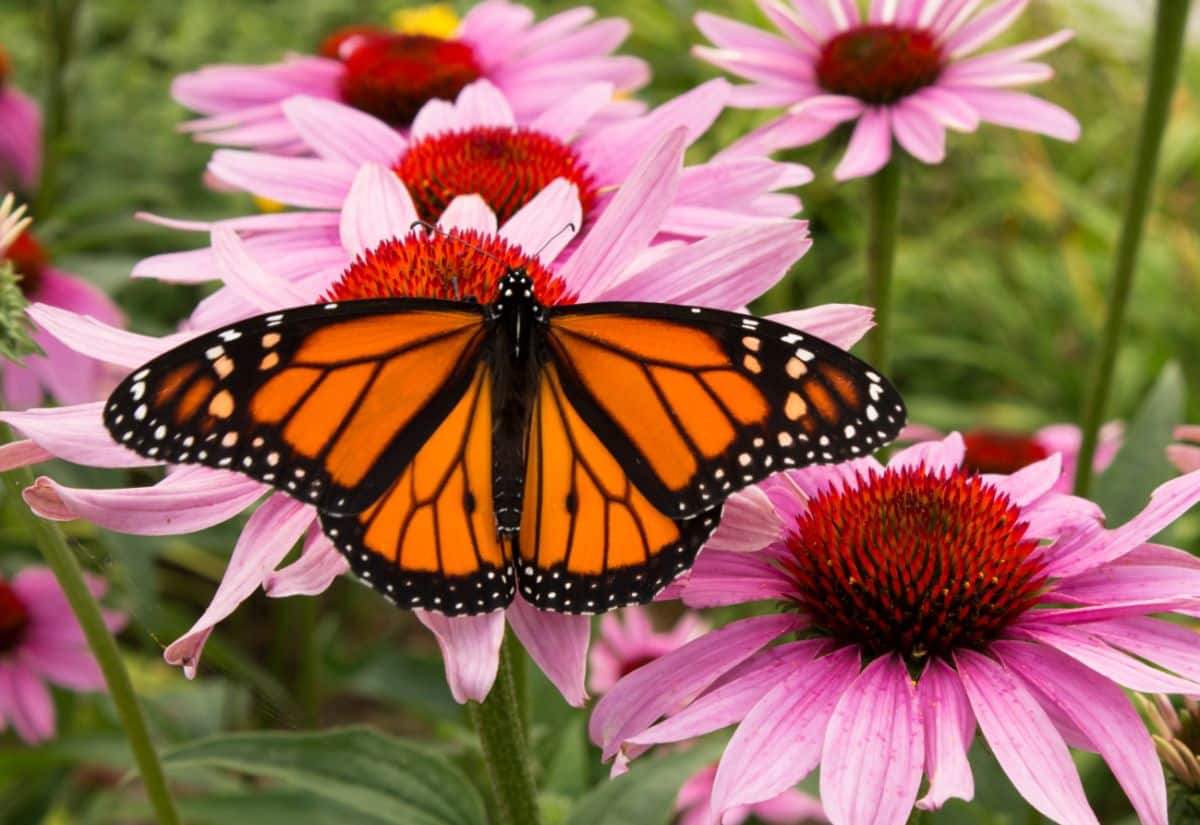
The National Wildlife Federation offers a program to certify your garden as a wildlife habitat. Once you do, you can join a community of other wildlife gardeners, share your story, or hang up a sign or plaque to encourage others to create their own wildlife garden!
In this guide, we’ll walk you through the steps you need to follow to certify your garden this season.
Jump to:
Why certify your garden?
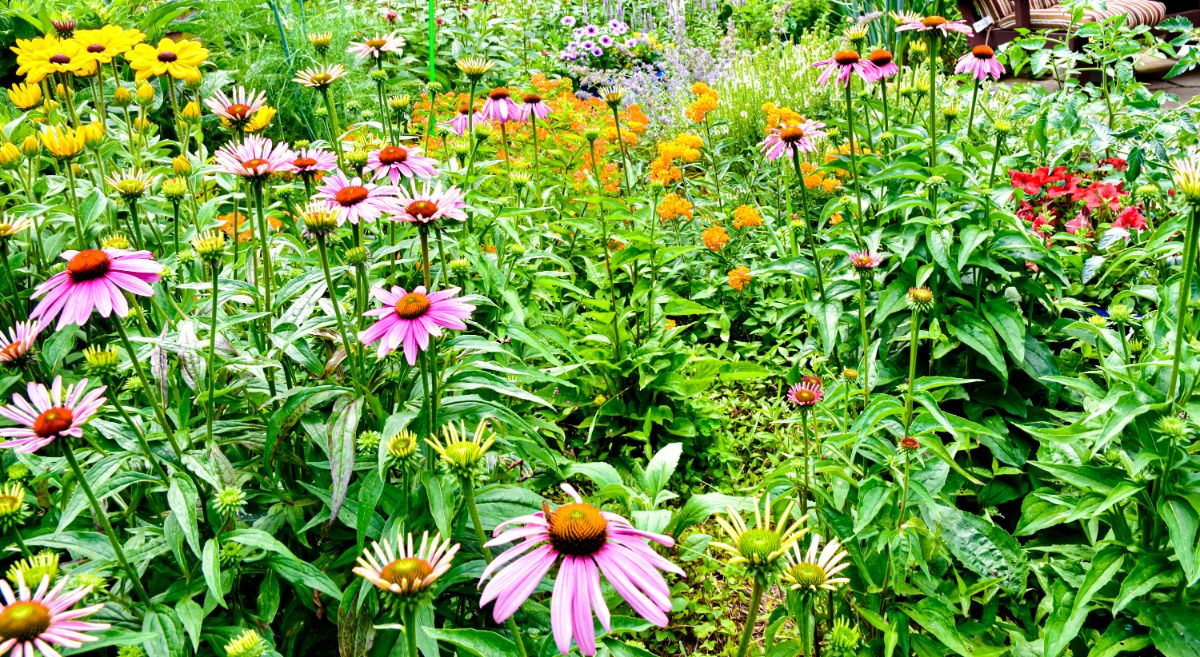
Creating a certified wildlife garden will let others know about all the hard work you’re doing to support pollinators and wildlife. It will also give you a chance to share all of your accomplishments!
Pollinator and wildlife habitats are becoming increasingly fragmented due to urban development, industrialized agriculture, and roadways. This can make it difficult for wildlife. But creating wildlife habitats and encouraging your neighbors to do the same will give birds, pollinators, and other creatures space to forage for food, raise their young and live out their lives.
What’s more, your contribution to the National Wildlife Federation will help to support their efforts to protect the environment, clean up waterways and shield wildlife from the impact of urban sprawl and habitat loss.
5 Things Every Certified Wildlife Habitat Needs

Although there are different programs available to help you certify your garden, the program offered by the National Wildlife Federation is well-known and easy to participate in. But, in order to get certified by this organization, gardens must contain the 5 key components listed below. Once you include those resources in your garden, certification is super easy!
But what exactly does your garden need to become a certified habitat?
1. Food
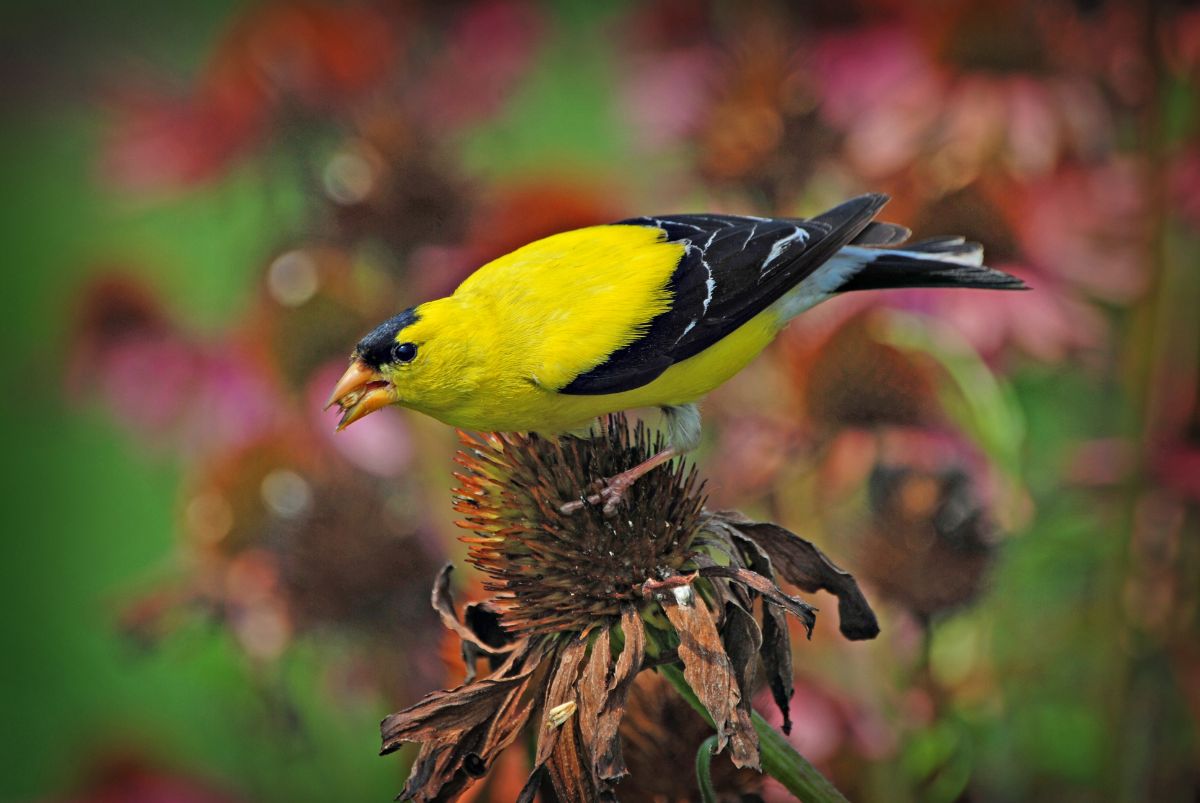
Birds, pollinators, and other wildlife need to eat as much as humans do, so if your goal is to create a wildlife habitat, you need to make sure that you have plenty of food for visiting birds, insects, and animals to eat. And, in order to have your garden certified, you will need to provide at least 3 different sources of food for wildlife.
That might sound like a lot, but if you consider all of the pollinator-friendly plants you can sow in your garden, it’s actually very easy to accomplish. Some of the best plants to keep for wildlife include:
- Spring bulbs to provide nectar and pollen for early emerging pollinators. Some great choices include snowdrops, crocuses, and daffodils.
- Flowering shrubs and trees, like forsythia, dogwood, and weeping cherry.
- Native plants, like yarrow, purple coneflower, black-eyed Susan, St. John’s Wort, bee balm, lupine, and cardinal flowers.
- Nectar and pollen-rich ornamentals like peonies, roses, and lilacs.
- Flowering herbs like sage, chives, and fennel.
- Top pollinator plants, like butterfly bushes, butterfly weeds, and milkweed.
- Seed-bearing plants for birds, such as millet, amaranth, and sunflowers.
- Extra produce sown deliberately for wildlife, like dill for swallowtail butterflies or windfall apples from your apple trees.
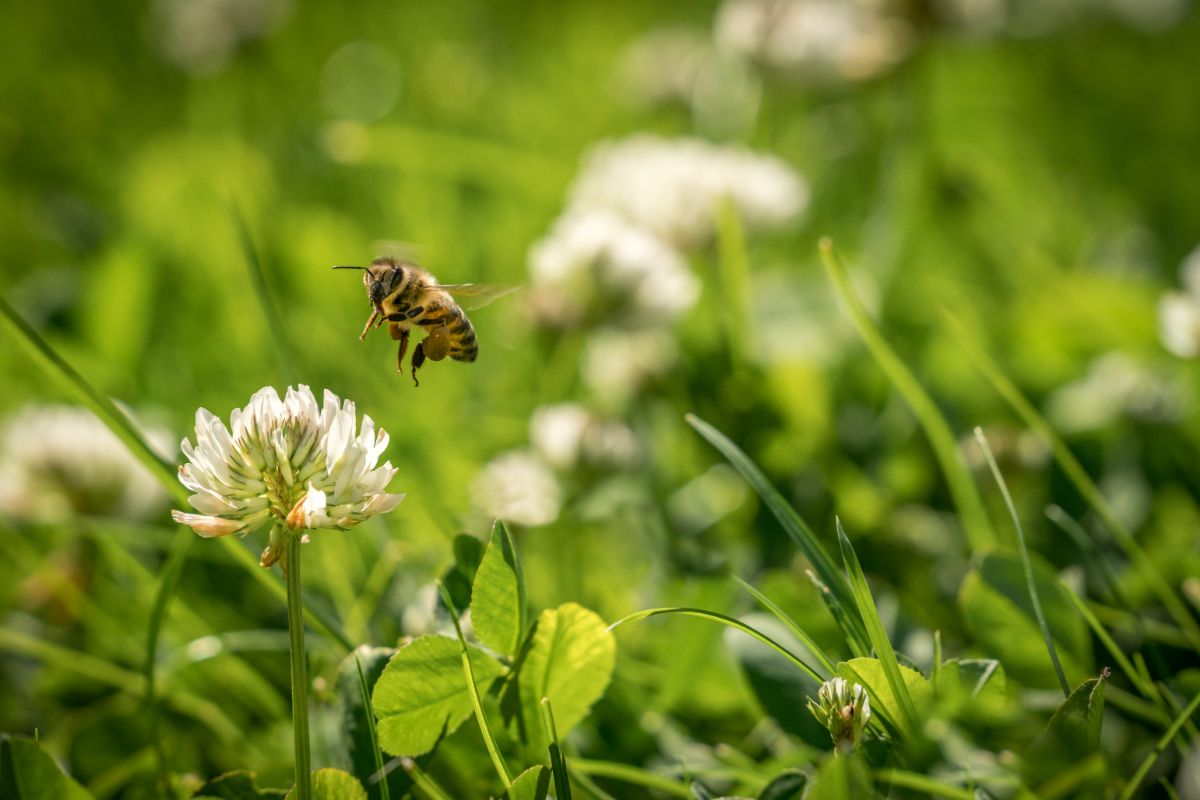
Beyond keeping plants just for wildlife, you can also consider replacing some or all of your lawn with wildflowers or clover.
And of course, beyond planting choices, there are other ways to include food for wildlife in your landscape, such as:
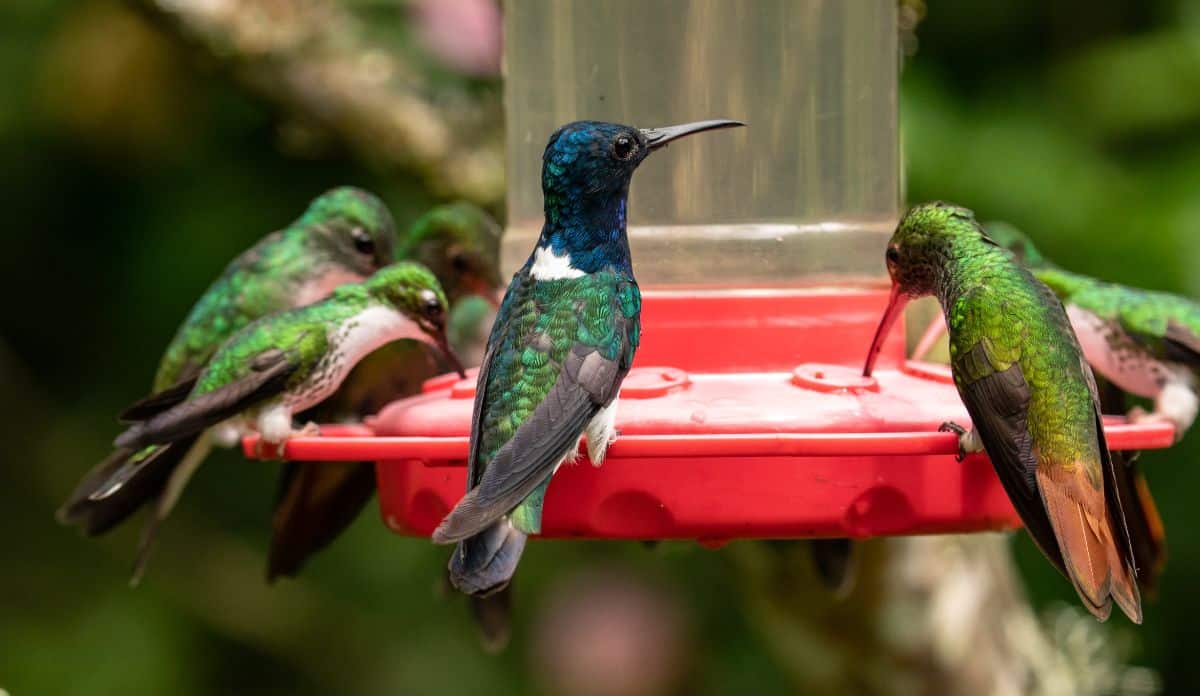
2. Water
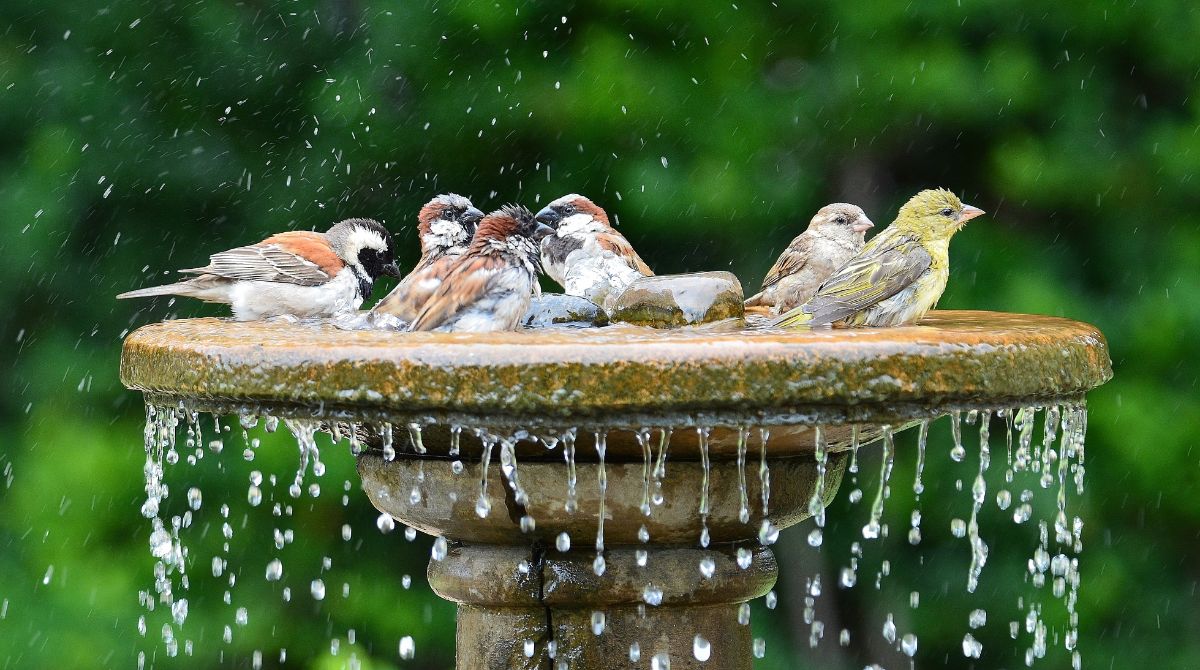
In addition to food sources, wildlife needs access to fresh water too, which can be particularly hard to come by in winter or during the peak of summer heat. For certification purposes, you’ll need to make sure your yard has at least 1 source of water, although you may want more to increase the chances that you’ll attract a wide variety of wildlife.
If your property already has a source of water, such as a small pond or running stream, that’s all you need. But if you would like to add a water source to your garden, why not try:
- Bird baths. For extra credit points, look for heated bird baths or add a small heater so you can provide fresh water in winter too!

- Puddling pool for butterflies.
- Heated bowls of water for other wildlife.
- A mister for hummingbirds.
- A decorative water feature, such as a waterfall or koi pond.
- Your garden sprinkler system or soaker hose.
3. Cover
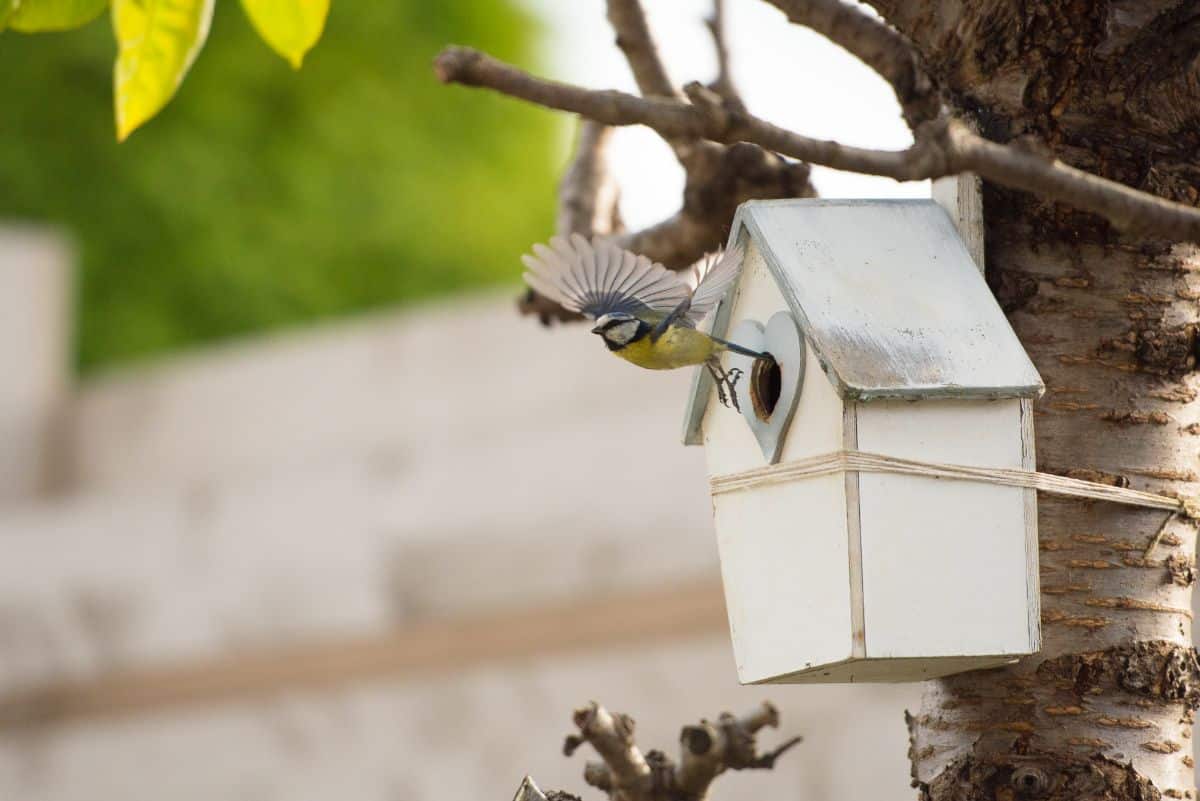
Cover or shelter will help to protect wildlife against the challenges of the weather and the changing seasons. If you’ve planted native plants and shrubs in your garden, you may already have enough shelter for wildlife. To be certified, your garden will need to include at least 2 sources of shelter.
Consider plants and other elements that you can include in your landscape that will provide cover for critters through the changing seasons. While deciduous trees may provide lots of shelter during the summer, when their leaves fall, their branches will be much less protected and will offer less insulation against the elements.
Some natural shelters to consider include:
- Evergreen shrubs and trees, including spruce, holly, and pine.
- Deciduous shrubs and trees for spring and summer coverage, such as oak, magnolia, and hydrangea.
- Snag trees. These dead trees provide lots of habitat for insects and birds and a foraging spot for woodpeckers.
- Plant debris. While many gardeners may be tempted to clean up their gardens really well in autumn, leaving some old plant matter in place provides some winter shelter for beneficial insects and pollinators.
- Wood piles.
- Unmowed patches of tall grass and/or wildflowers.
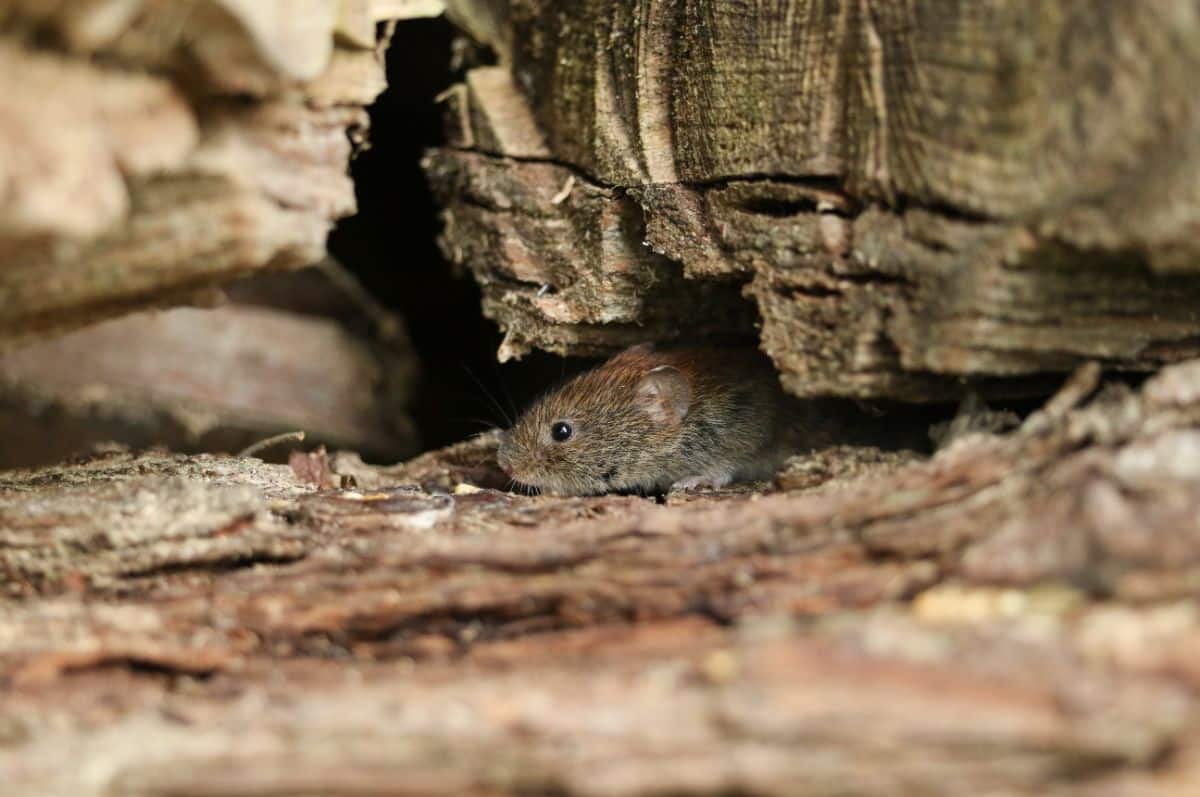
Or, if you’d prefer to install a prefabricated shelter, try out the following:
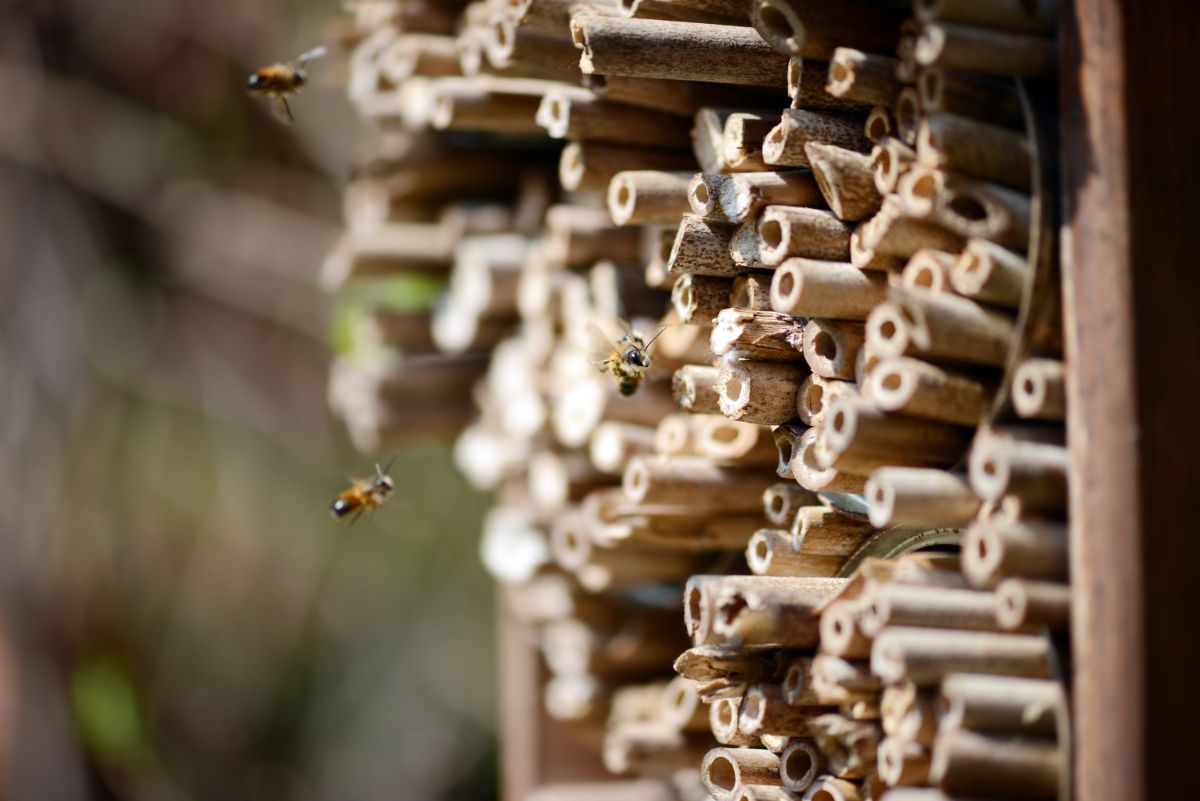
4. Young
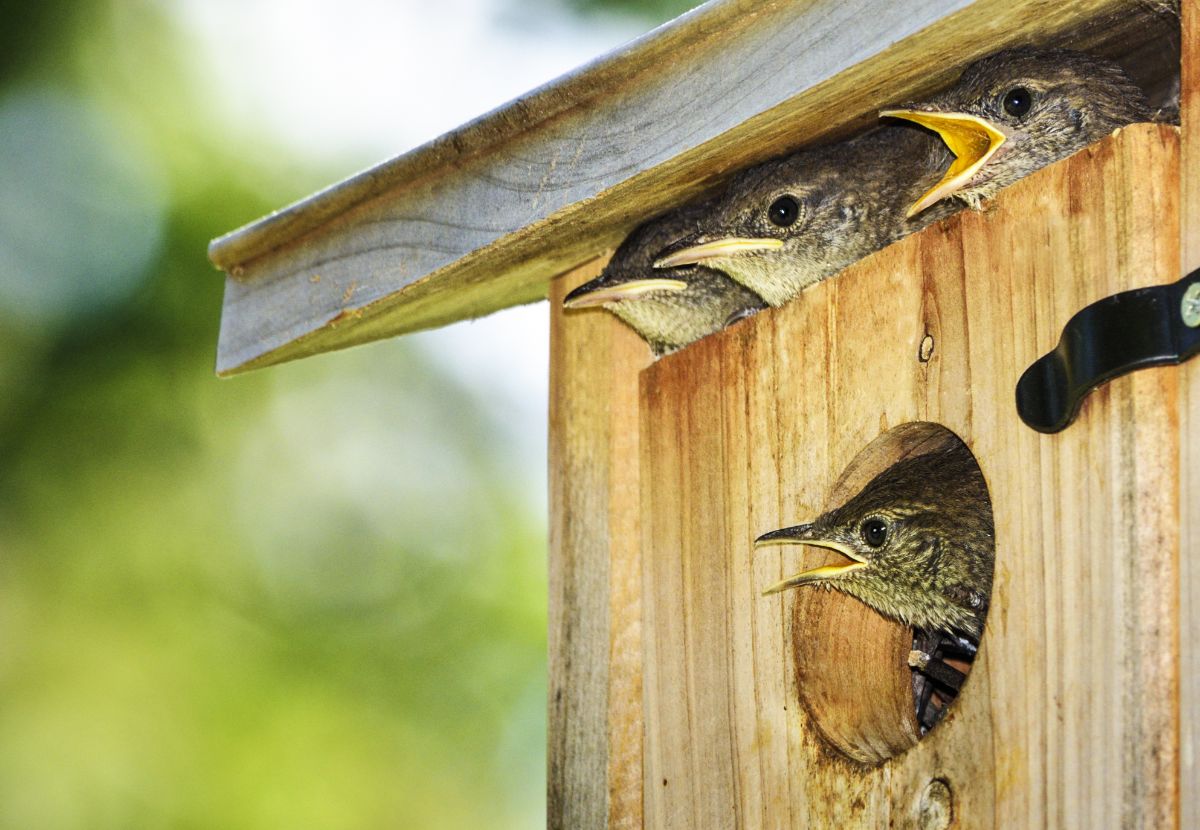
In order to keep wildlife populations thriving, birds, pollinators, and other wildlife need a safe place to raise their young. These safe places can be the same shelters you provided in the above step, or you can choose to add additional shelters. To meet the certification requirements, you’ll need to provide wildlife with at least 2 places to raise their young.
Things to keep in mind:
- Dense, evergreen trees provide safe places for birds to build their nests, as do birdhouses.
- Many hummingbirds build their nests out of spiderwebs and lichens, so leaving these in place in your yard can help support breeding populations.
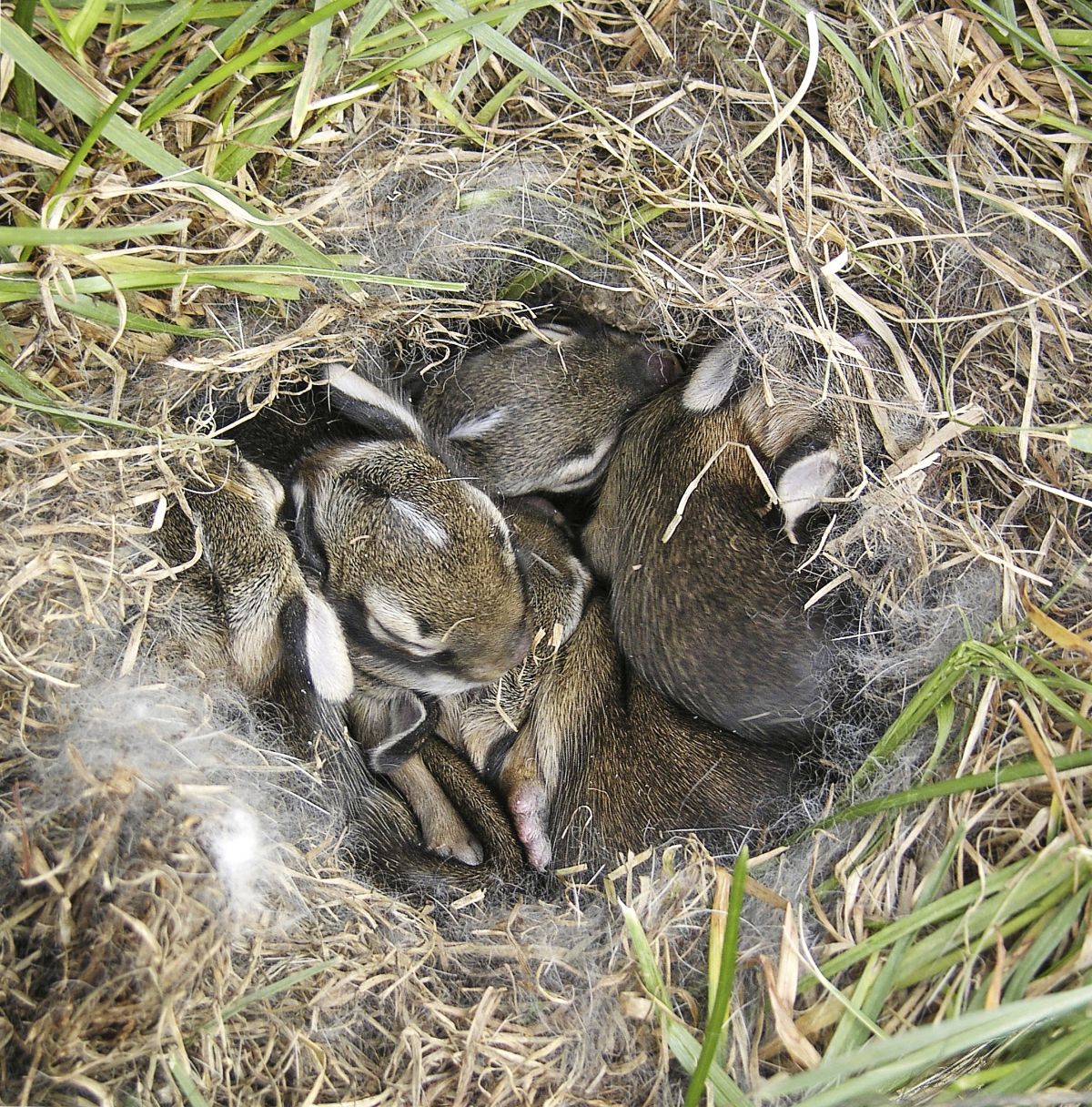
- Unmowed sections of your lawn can provide safe refuge for rabbits and other wildlife while they raise their babies.
- Providing a small pool for frogs and toads to lay their eggs in can help these amphibians out as well.
5. Sustainability
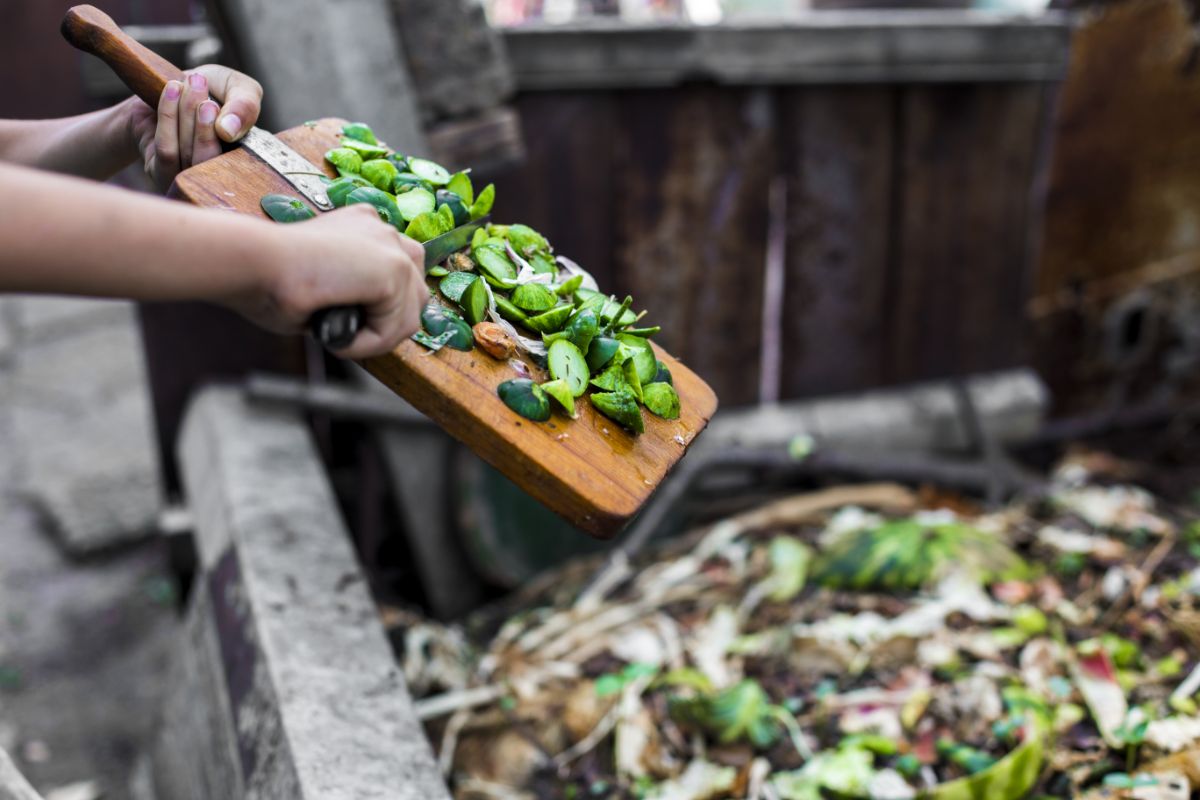
Once you’ve added food, water, and shelter to your garden, you’ve made an effective wildlife habitat. But in order to become certified, there’s one more thing to consider.
The National Wildlife Federation requires that you include 2 sustainable gardening practices in your landscape design or outdoor maintenance regime. These practices will ensure that your landscape is as friendly for wildlife as possible and they will also help you to reduce your footprint and the waste in your yard.
These sustainable gardening practices fall into 3 categories. You can choose whichever practices you’d like, but the more you include, the more sustainable your wildlife habitat will be.
The sustainable practices suggested by the National Wildlife Federation are:
- Soil and water conservation.
- Controlling invasive species.
- Using organic lawn and garden practices.
There are several ways to conserve soil and water in your garden. These can include:
- Limiting water waste by learning how to water your garden efficiently or replacing your sprinkler with a drip irrigation system.
- Composting lawn and kitchen waste to reduce your impact and limit the need for fertilizers.
- Mulching your garden beds for water conservation and natural weed control.
- Replacing some of your lawn or paved sections of your property with pollinator-friendly plants.
- Or creating a rain garden to benefit wildlife and limit runoff.
Invasive species can be controlled by:
- Removing and properly disposing of invasive plants.
- Planting native plants.
- Keeping cats indoors to protect wild birds.
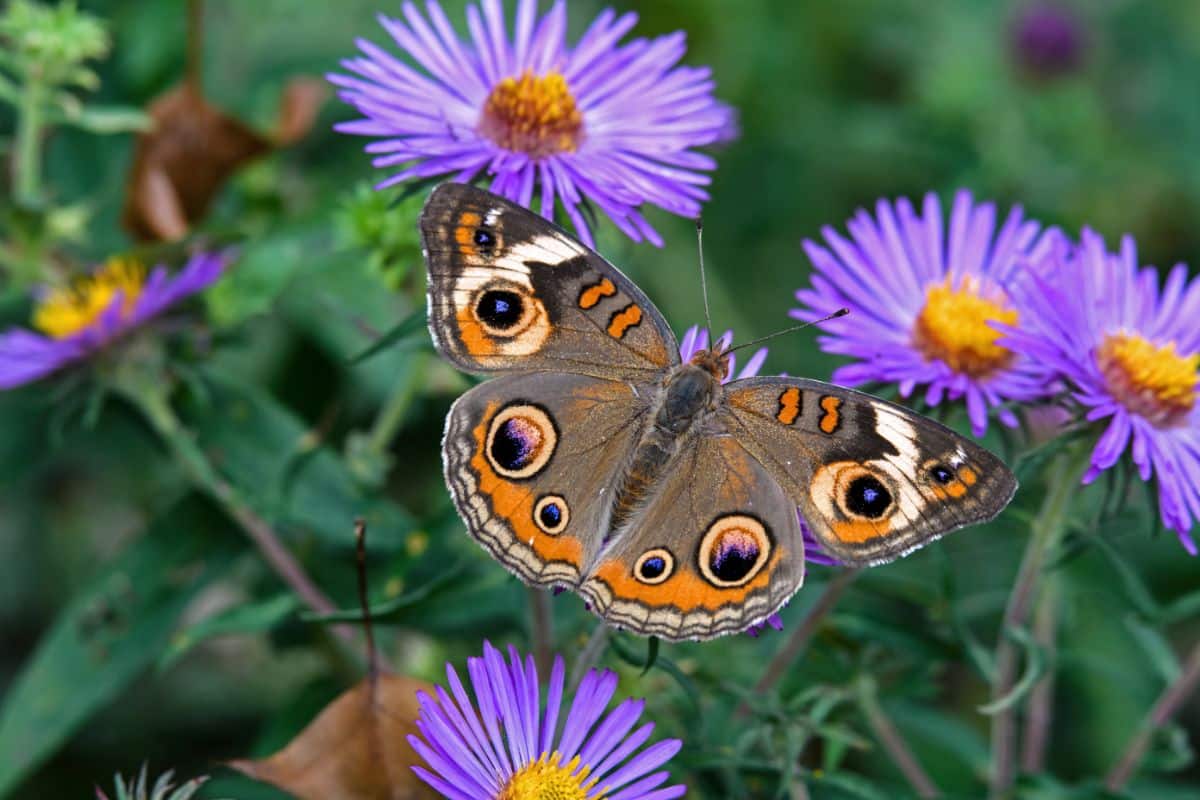
And for organic gardening practices, try the following:
- Replacing synthetic fertilizers with all-natural fertilizers, compost, or aged manure.
- Swapping out chemical pesticides for barrier methods, like floating row covers and fencing. Or use less destructive pesticide alternatives, like neem oil and slug pubs.
- Planting native plants to attract pollinators and beneficial insects for natural pest control.
- Performing proper gardening maintenance, like rotating your crops and destroying infected plant material.
- Improving your soil over time with annual additions of compost.
- Trying companion planting to grow healthier plants and reduce pests naturally.
Certifying your Garden
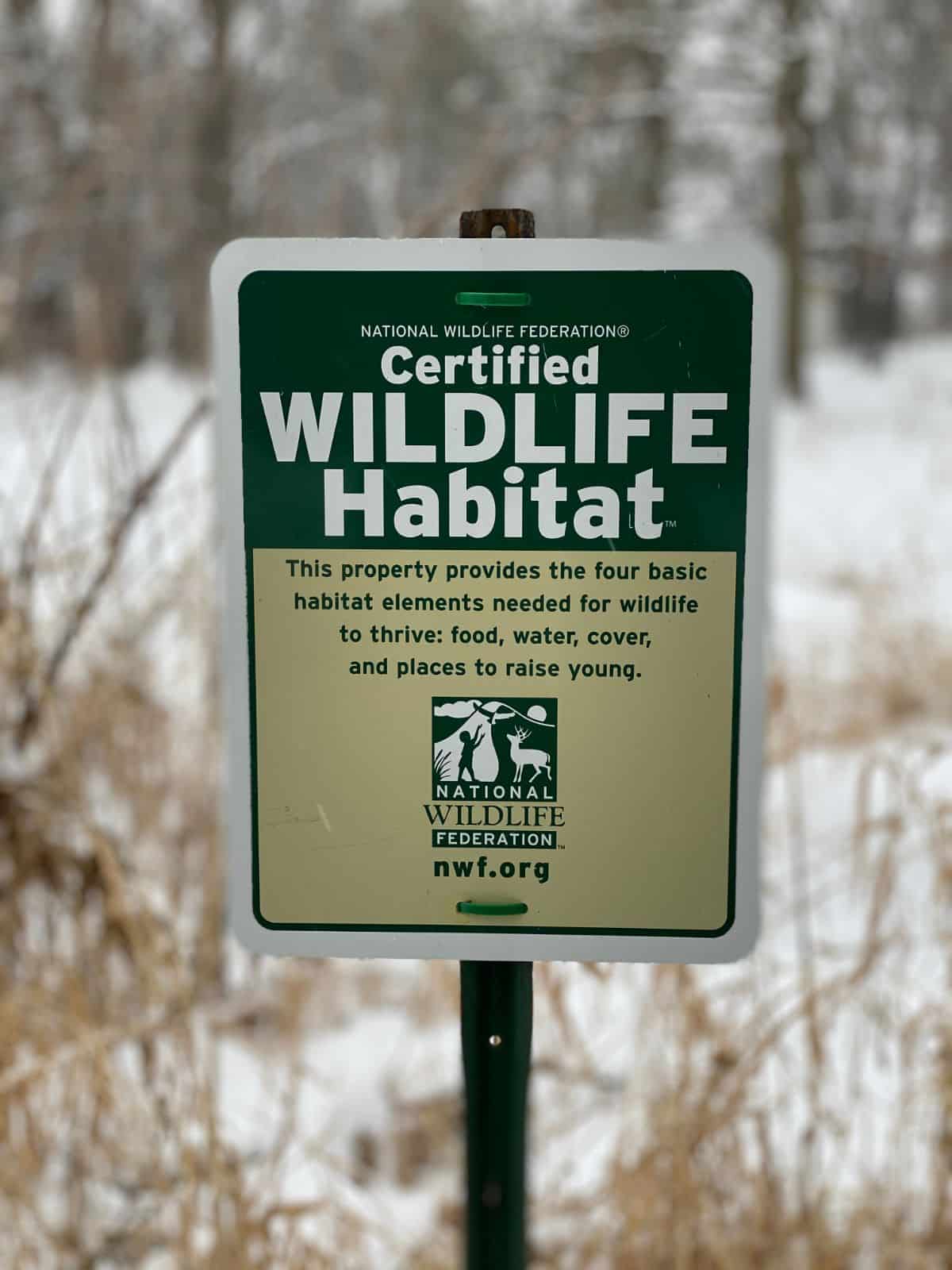
Once you’ve added all of the above elements to your garden, it’s time to get certified. How exciting!
But how exactly do you do that? Well, the National Wildlife Federation makes the process super easy.
All you need to do is go to their website and certify your garden by filling out the online form. The form will ask for your contact information and whether or not your garden includes all of the above-listed items. If it does, you’re good to go.
Before you complete your certification, you will be asked to pay an annual membership fee of $20. If you’d like, you can upgrade your subscription and receive a yard sign, plaque, or flag to hang up in your garden as well to let your neighbors know all about your wildlife habitat.
After clicking ‘Submit,’ your application will be processed, and you will receive your paper certificate (and optional yard sign) in the mail in a few weeks.
When your certificate arrives, frame it up and then celebrate your achievements. You’ve made a certified wildlife habitat and done your part to help protect the environment, pollinators, and other wildlife too!
What’s next?

Part of the importance of creating a certified wildlife habitat is that it will help to spread awareness to others and encourage them to create habitats of their own. After all, the more backyards that are converted into wildlife habitats in a single neighborhood, the more resources will be available for foraging pollinators and other animals.
Hanging a sign in your yard letting others know about your wildlife habitat can help to spread awareness, but there are other things you can do too. You can:
- Host a garden party to show others how gorgeous your wildlife habitat is!
- Write a letter to your local newspaper to let others know about how to create their own habitat.
- Create a workshop at your local library or community center to teach others about wildlife habitats.
- Contact your local lawmakers and encourage them to make a city-wide certified wildlife habitat.
- Start your own blog to inspire others to create wildlife gardens.
- And brainstorm your own ideas!
Frequently asked questions

Getting your garden certified as a wildlife habitat proves that your outdoor space provides valuable refuge and resources to migratory and local species.
In order to become a certified wildlife habitat, outdoor spaces must include food, water, shelter, and a safe place for wildlife to raise their young. The National Wildlife Federation also requires habitats to employ sustainable gardening practices, such as water conservation and organic gardening methods.
Even organic pesticides can be harmful to pollinators if they are improperly applied; however, they are generally much safer than synthetic pesticides. When properly used, neem oil sprays, insecticidal soap, milky spore, and BT thuricide are safer pesticide options that are all approved for use in organic gardens.
Organic farmers often use traditional gardening methods to keep pests away. Techniques such as companion planting, crop rotation, timing plantings correctly, and choosing seeds that are naturally resistant to pests are all excellent ways to reduce pest activity in your garden without needing to resort to pesticides. Barrier methods, like fruit protection bags and floating row covers, are also very effective.
For bird health, the water in bird baths should be replaced at least every other day. It’s also a good idea to clean out your bird bath regularly with a mixture of 1 part bleach to 9 parts water.
Bird seed in your feeders should be replaced at least every 5 to 7 days to prevent issues like mold. You may also want to clean out your feeders from time to time with a mixture of 1 part bleach to 9 parts water.
Summary
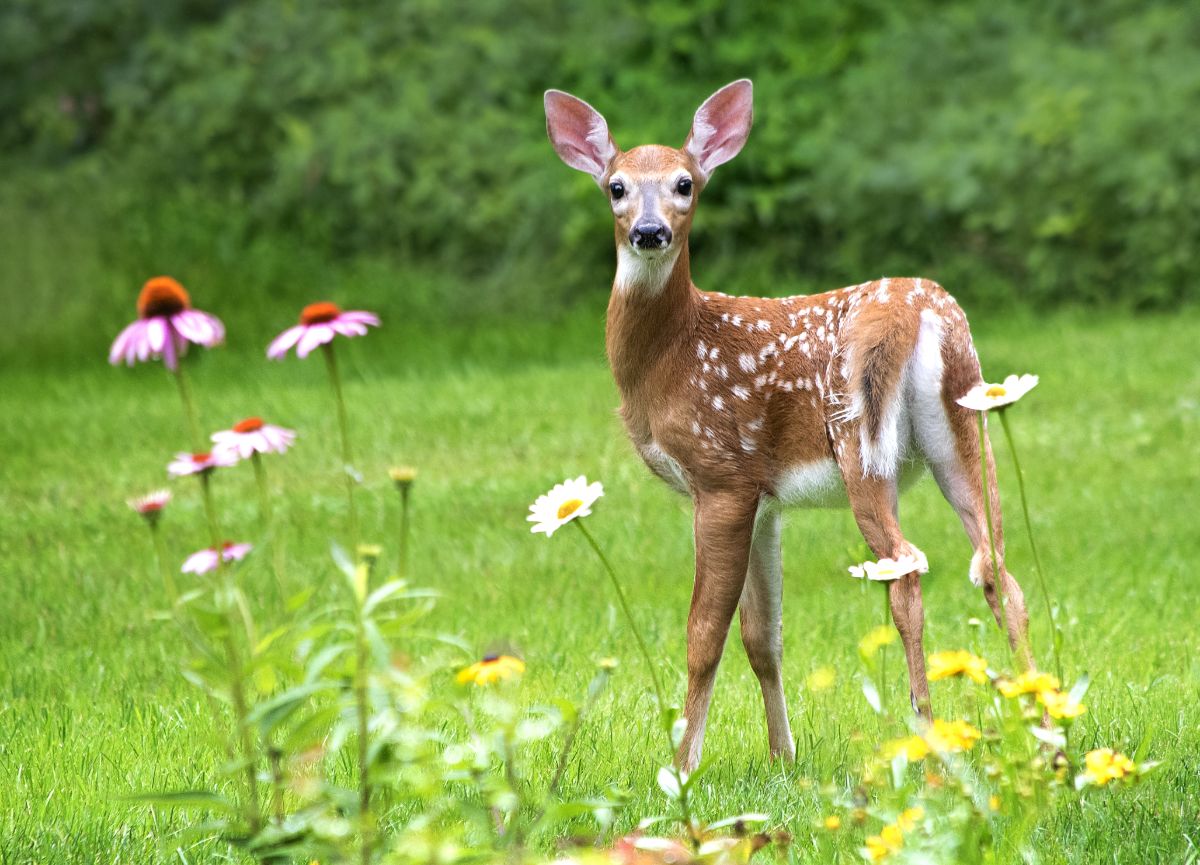
Creating a pollinator garden is a wonderful way to help out local wildlife and help preserve natural biodiversity in the face of a changing climate and urban sprawl. But if you want to do even more to protect wildlife, getting your garden certified as a wildlife habitat can help.
Creating a certified wildlife habitat will help you to celebrate all the hard work you’ve put into your garden. It can also help spread the word to others about the benefits of conscious gardening and inspire your neighbors and friends to create wildlife habitats of their own!
If you’d like to learn more about gardening for wildlife, check out our article on creating a winter habitat for birds right here.

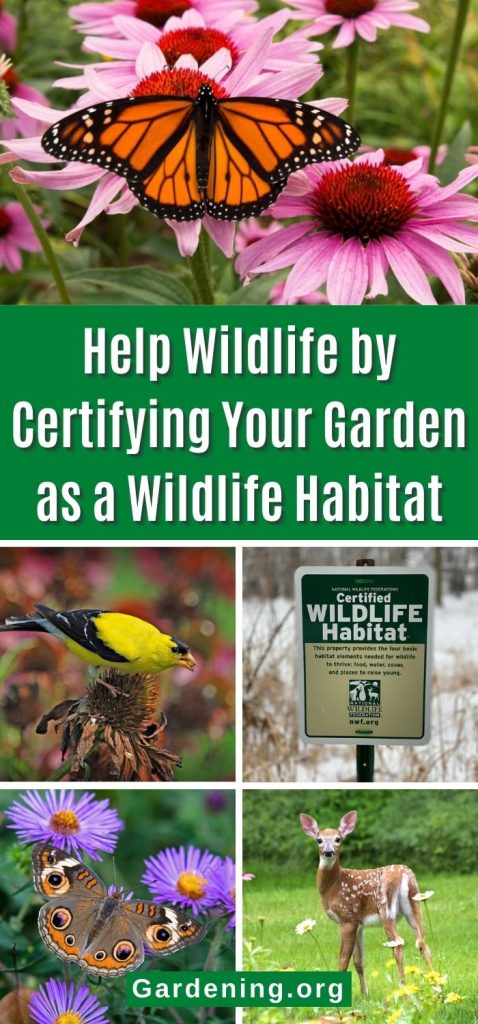
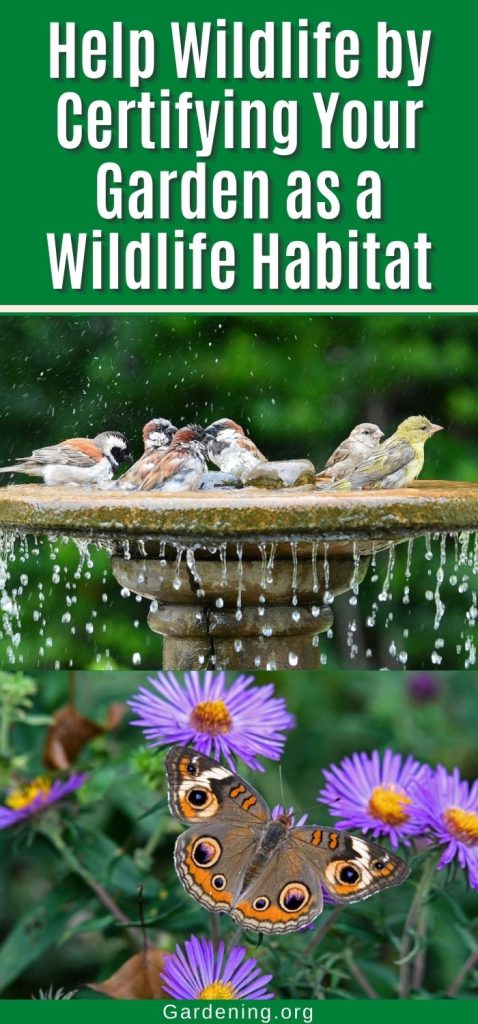
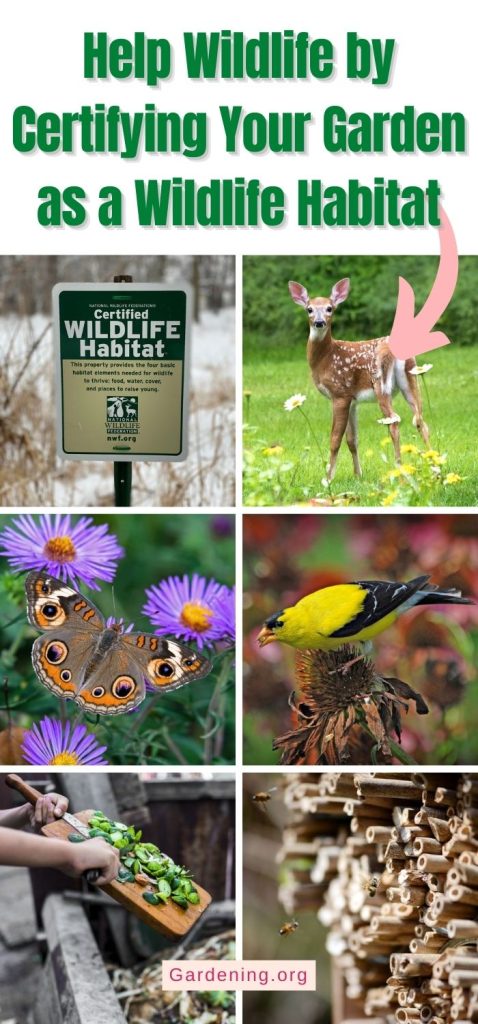
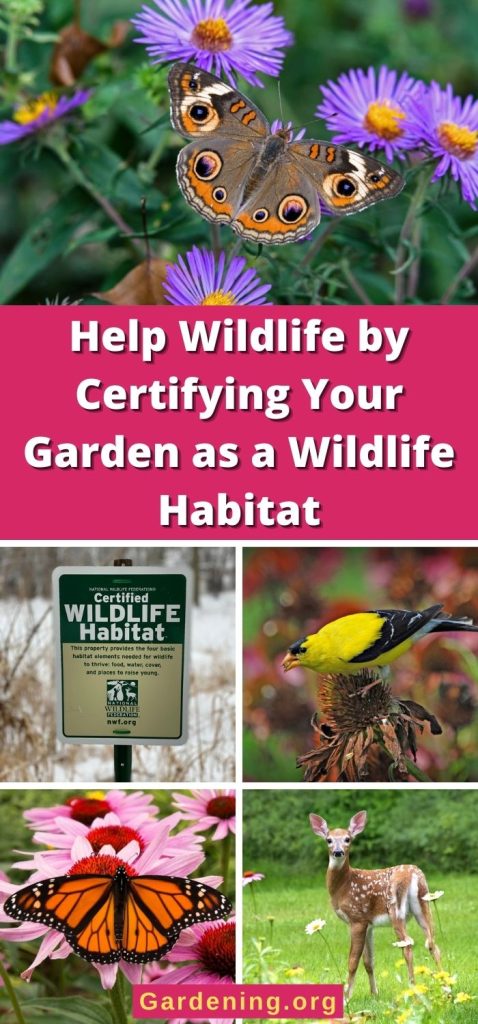
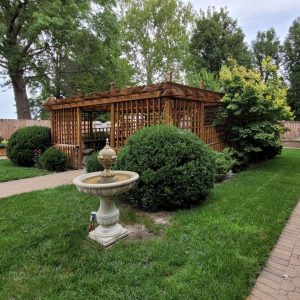
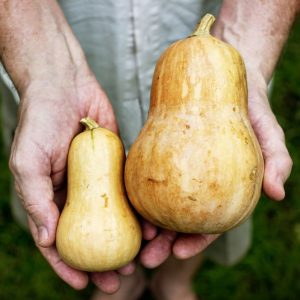
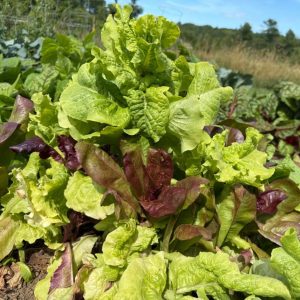
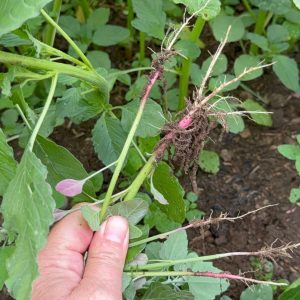
Leave a Reply